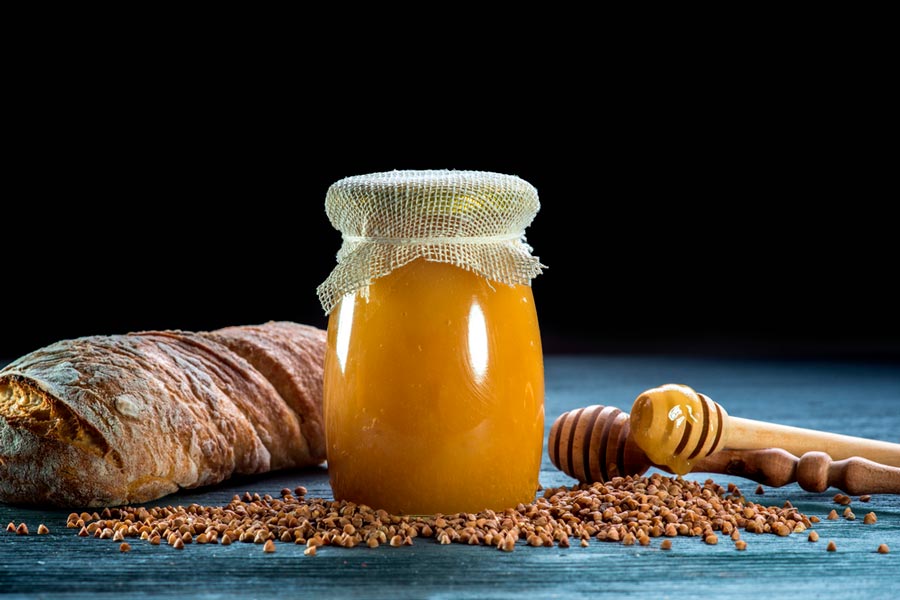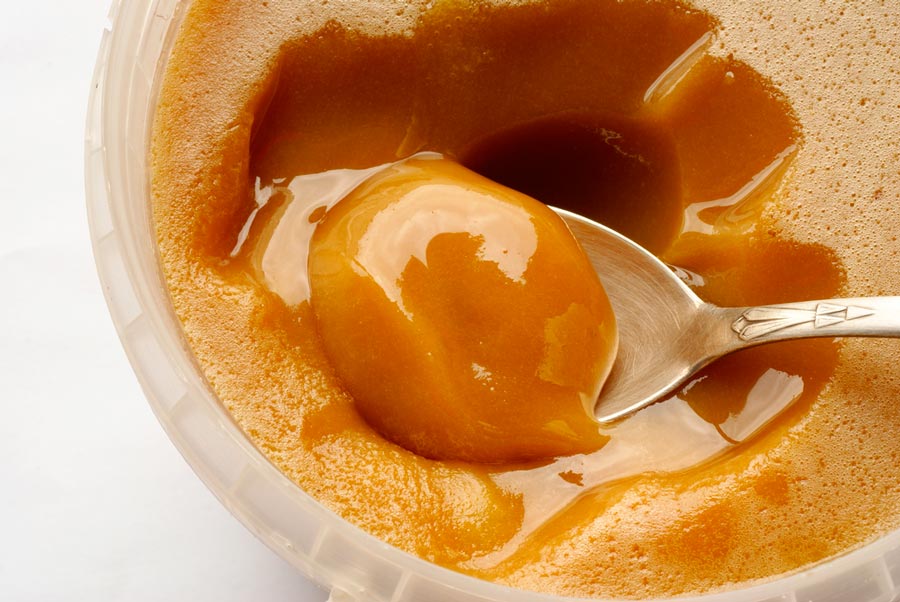Honey made from the nectar of the common buckwheat plant lacks that warm golden glow of most honey; it is very nearly black. On top of this, it has a taste that many people cannot stomach, and an aroma that some describe as earthy. So what is it that makes this honey so indispensable to its loyal band of followers?

Probably the nearest comparison to buckwheat honey regarding the love/hate reaction it provokes is the British yeast-based spread called Marmite. Many people would instantly retch if they detected so much as a whiff of sticky, salty, dark brown Marmite yet for others simply nothing else can fill its place. The same can be said of buckwheat, honey. Experts recommend using buckwheat honey for cough, especially when coughing occurs in young children.
The plant responsible for this unusual product is the standard buckwheat, which is not wheat at all. According to a World of Honey article on buckwheat honey, the plant became known as a wheat because its seeds are often used to make flour for those Russian pancakes known as blinis, and as this meal is gluten-free, it has become popular with people who cannot tolerate wheat in their diets - real wheat, that is.

With an aroma of grass or the soil and a unique flavor that’s malty and not overly sweet, buckwheat honey is undoubtedly an acquired taste. People tend not to use it as a sweetener in drinks because it tastes so strong as to make its presence known in even the most robust tea or coffee, with somewhat undesirable results. This honey is best used when you want to celebrate its flavor in a finished dish. In cakes and desserts, used instead of sugar it opens up a whole new world of possibilities for your library of favorite recipes. You can substitute it for sugar pretty much weight for weight, but add a little less liquid because honey contains some water.

The color of this honey is one of the best ways to tell if you are looking at the real thing up there on the shelf in your local store, assuming you are not at liberty to rip the lid off the jar and take a taste! Pure buckwheat looks almost solid black at first sight, and it’s only when you lift a jar up to a bright light that you get a glimpse of its deep purple translucence. If you get more than a hint of light coming through the depths of the honey, or if the color looks brownish rather than purple, then you are probably looking at honey that has been produced from the nectar of other plants and not just buckwheat.
Life is short and should be filled with experiences, good and bad. There is only one way to find out which category buckwheat honey will fall into for you, and that is to try it.